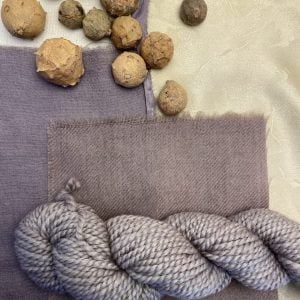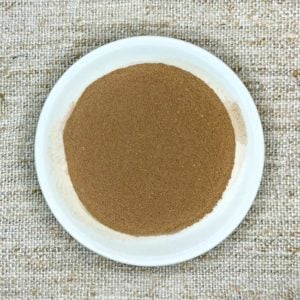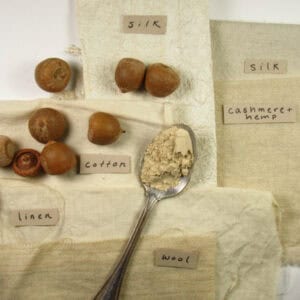Alone, oak galls make a light beige color by themselves and lighten slightly when followed by an alum mordant. When dipped in an iron afterbath, the color quickly changes to a gray or “black” shade, depending on the amount of dye used.
Fiber Preparation and Mordanting
We offer scouring and mordanting instructions for wool, alpaca, silk (protein), cotton and plant (cellulose) fibers. Your fiber should be scoured and mordanted before dyeing.
Extracting the Dye
Use oak galls at 10-50% on the weight of fiber (WOF). If you have whole oak galls, you will need to crush them into a powder before using. Add oak galls to a small stockpot with approximately 1 quart of water and simmer for 1 hour. Let cool. Strain out the oak galls, reserving the liquid for your dyebath.
Adding Fibers to the Pot
Fill the dye pot with water so that the fibers move easily. Add the extracted liquid and stir well. Add the wet, mordanted fibers to the cold dye pot and begin heating the water and bring to about 90 degrees F (33 degrees C), rotating the goods gently. Hold at this warm temperature for 30 minutes, then bring the temperature up gradually to 180 degrees F (80 degrees C), rotating gently. Hold at this temperature for 30-45 minutes, rotating regularly.
Rinsing
Using the same temperature water as your dye bath, rinse the dyed goods once or twice to remove excess dye, then wash gently in a neutral liquid soap. Dry away from direct sunlight.
Reusing Dye Baths and Disposal of Dye
Any exhaust baths with dye color left in them may be used to dye additional materials. I keep extra small skeins of mordanted wool yarn and throw those into the exhaust baths. There will usually be some residual color in the dyebath, even after using the exhaust bath. Dispose of the used dye baths in accordance with your local municipal guidelines.




